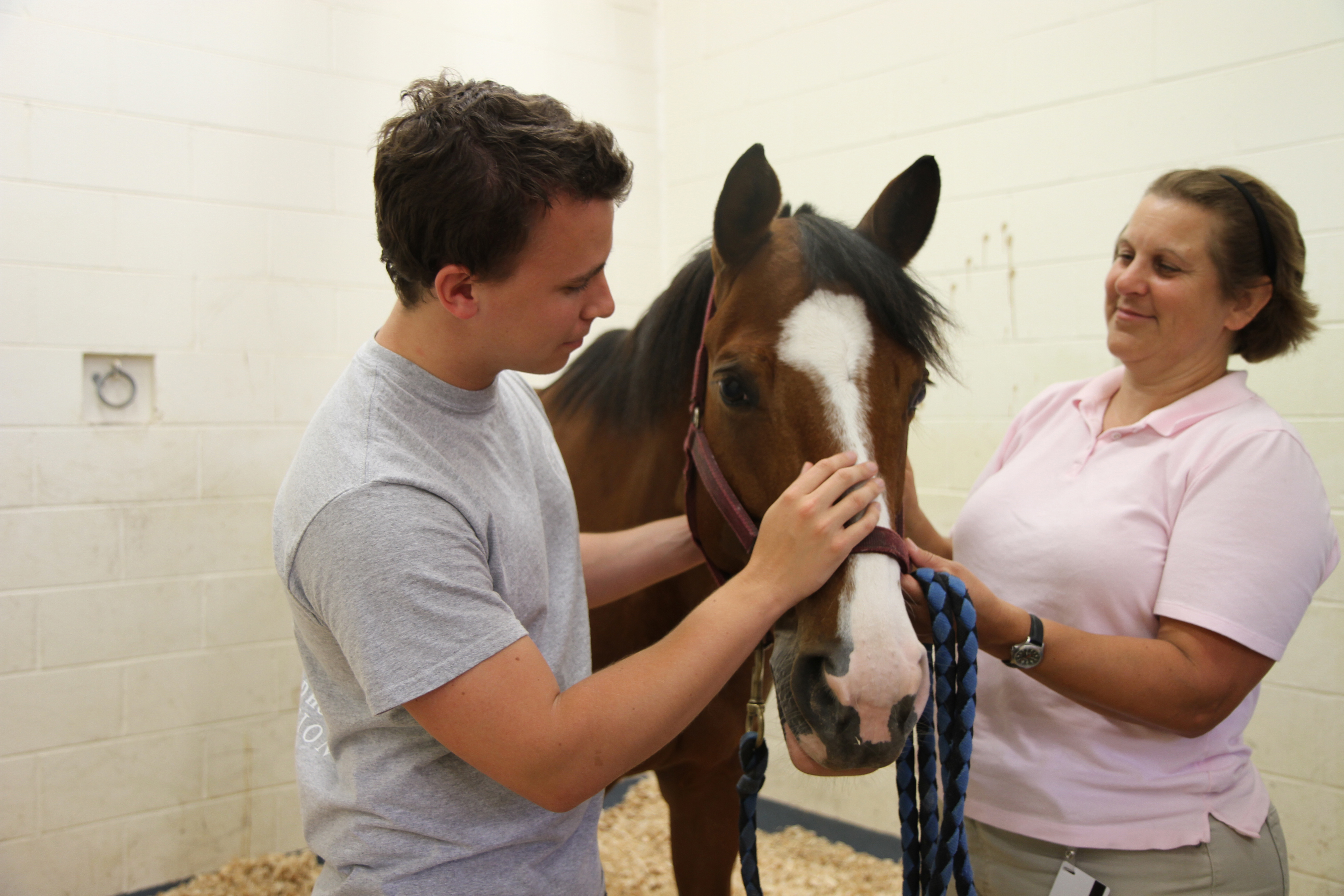Undergraduate student researches methods to regenerate damaged tissue in people and horses

What does the future of regenerative medicine look like? Undergraduate student Daniel Inman of Blacksburg, Va., a senior majoring in biological systems engineering in the College of Engineering, says he believes it will involve the successful injection of stem cells into injured tissue to stimulate regeneration of healthy new tissue.
As part of the Fralin Life Science Institute Summer Undergraduate Research Fellowship (SURF) program, Inman is working with Linda Dahlgren, associate professor of large animal clinical sciences in the Virginia-Maryland Regional College of Veterinary Medicine. His project, funded by the National Institutes of Health, focuses on ways that stem cells might be used to repair damaged ligaments and tendons in humans and horses. Damaged ligaments and tendons are common musculoskeletal injuries in people and horses and can be a challenge to treat successfully without re-injury.
"Lameness in horses can cause a lot of problems, because of the inadequate healing and loss of performance in equine athletes," Inman said. "A major tendon injury can be career ending, just as it can be in people."
As part of Dahlgren's research team, Inman is looking at a particular gene, scleraxis, thought to be important in tendon and ligament development. By using a bioreactor that simulates the native environment of ligament in conjunction with increased expression of scleraxis through gene therapy, he hopes to induce stem cells to become mature ligament-like cells suitable for use in ligament and tendon engineering. The ultimate goal is to investigate how stem cells may be able to help regenerate damaged tissue.
Although clinical applications are further down the road, Inman is passionate about this line of work. Entering Virginia Tech as a biomechanics engineering major, he switched to biological systems engineering his junior year. He found his niche when he attended the Graduate and Professional School Day offered by Virginia Tech in September 2011. At the open house, he met representatives of the Virginia-Maryland Regional College of Veterinary Medicine; by December, he was observing equine surgeries in the Veterinary Teaching Hospital and developing an interest in pursuing an undergraduate research program.
"By exposing undergraduates to biomedical research and providing mentorship from experienced scientists, we hope to encourage them to pursue career opportunities in the field," said Dahlgren.
"It just really clicked with me -- I love it," Inman said. He plans to apply to the combined DVM/Ph.D. program at the veterinary school this fall. This program allows a select few highly qualified students to achieve both a DVM and a Ph.D. simultaneously through the integration of the coursework, research, and clinical training of the two independent programs.
During the summer of 2012, the SURF program and the Division of Undergraduate Education's Scieneering program have banded together to offer an unprecedented number of students -- 82 -- paid research fellowships. Research appointments, outreach, and group activities are coordinated by Tomalei Vess, director of undergraduate research, and Keri Swaby, Scieneering program manager. For more information, visit the Fralin Life Science Institute SURF website and Scieneering program website.
Dedicated to its motto, Ut Prosim (That I May Serve), Virginia Tech takes a hands-on, engaging approach to education, preparing scholars to be leaders in their fields and communities. As the commonwealth’s most comprehensive university and its leading research institution, Virginia Tech offers 240 undergraduate and graduate degree programs to more than 31,000 students and manages a research portfolio of $513 million. The university fulfills its land-grant mission of transforming knowledge to practice through technological leadership and by fueling economic growth and job creation locally, regionally, and across Virginia.







